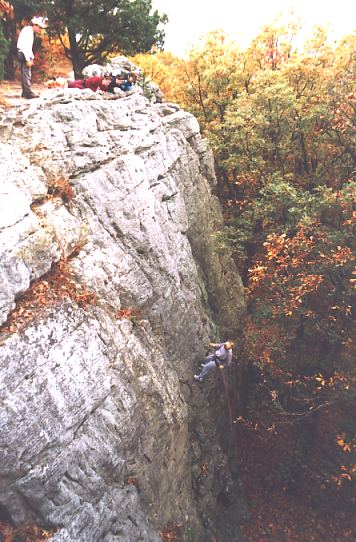
To rig the figure eight, pull a bight of the rappel rope through the big hole and loop it around the stem; then clip the small hole into your harness with either a locking biner or two opposing standard biners.
Another option is, instead of looping the rope around the stem of the device, simply clip it through the biner(s) connecting the device to your harness. On single ropes, you can feed the rappel rope through the smaller hole, though this often results in excessive friction. There is no hard and fast rule dictating which procedure is best. The climber's weight, whether you are on a double or single rope and the steepness of the rappel all must be taken into account. Experiment!
The advantages of the figure eight are ease of rigging and the relative fail-safe nature of the device. The disadvantages are that they put a twist in the rope which causes kinking; they're generally heavier and more bulky than other belay rappel devices; and they allow twists to pass which could get your rope stuck. The simple solution here is to clip a sling into your harness and then to one of the rappel lines above your figure eight, so no twists can pass. Figure eights do work better on icy ropes, but most rock climbers will never deal with iced ropes.